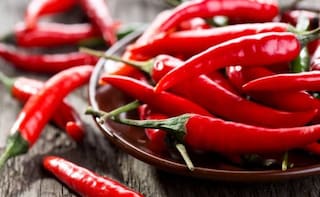The hottest ingredient in the kitchen, literally, there are some kinds of chillies that rank mild on the scale and then there are a few innocent looking ones that can get you clenching your fists and biting your tongue. Chillies are extremely crucial for several world cuisines, especially Indian food where no dish is complete without a little sprinkling of this spicy flavour note.
Advertisement
Advertisement
Advertisement
Advertisement
For the latest food news, health tips and recipes, like us on Facebook or follow us on Twitter and YouTube.
Advertisement
